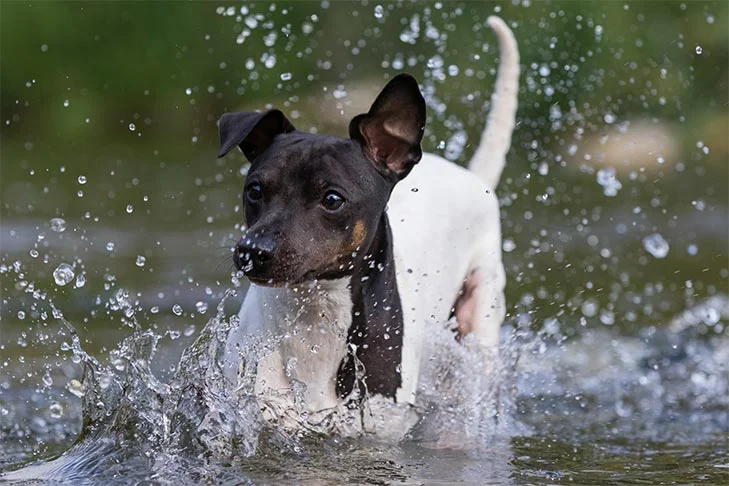Japanese Terriers are a small, highly intelligent breed full of terrier temperaments. They are self-sufficient, active, crisp, and lively. As one-person dogs, they are often reserved with strangers. Keen and alert, Japanese Terriers will hear the slightest noise and give a warning to any stranger. He has no issue with respecting youngsters and other canines. As a sporting terrier and versatile, eager-to-learn dog, he has great athleticism and inborn instincts. By the 1900s, near the close of the Meiji Period, some of the best dogs could be seen on the streets of Kobe and were dubbed “Kobe Terriers.” The appearance of these “Kobe Terriers” was like a blend of the present Smooth Fox Terriers and the Japanese Terriers. These dogs were the first terrier-type dogs to be bred in Japan.
Around 1916, in the Nada ward near Kobe, a dog named Kuro meaning black in Japanese was born through out-cross breeding from English Toy Terriers and a Toy Bull Terrier both brought from Western countries. With careful breeding pair selections from these offspring and the Kobe Terriers, a very short-haired, slim, small terrier-type dog was born, which is now known as the Japanese Terriers. By 1930, their work with the breed had contributed to the development of a standard, which was finally recognized by the Japan Kennel Club. The Japanese Terriers did not become widespread until 1940 when they were seen in most major Japanese cities. When these cities needed a smaller, more active dog than large watchdogs, the demand for this breed skyrocketed. However, the breed neared extinction twice in its history: once during World War II and again around 1948, when Western breeds became more popular.




 Health
Health Grooming
Grooming Exercise
Exercise Training
Training Nutrition
Nutrition